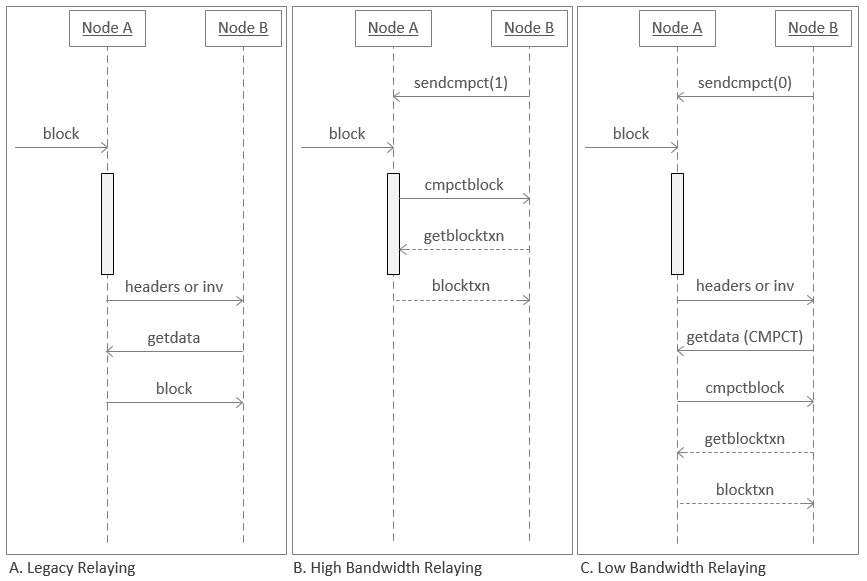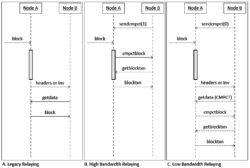Join Our Telegram channel to stay up to date on breaking news coverage
Overview Summary What are some useful benchmarks for this? How are expected missing transactions chosen to immediately forward? How does the Fast Relay Network factor into this? Does this scale Bitcoin? Who benefits from compact blocks? What is the timeline on coding, testing, reviewing and deploying compact block propagation? How can this be adapted for even faster p2p relay? Is this idea new? Further reading resources
Compact block relay, BIP152, is a method of reducing the amount of bandwidth used to propagate new blocks to full nodes.
Summary
Using simple techniques it is possible to reduce the amount of bandwidth necessary to propagate new blocks to full nodes when they already share much of the same mempool contents. Peers send compact block “sketches” to receiving peers. These sketches include the following information:
The 80-byte header of the new block Shortened transaction identifiers (txids), that are designed to prevent Denial-of-Service (DoS) attacks Some full transactions which the sending peer predicts the receiving peer doesn’t have yet
The receiving peer then tries to reconstruct the entire block using the received information and the transactions already in its memory
Join Our Telegram channel to stay up to date on breaking news coverage


